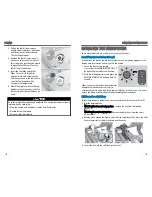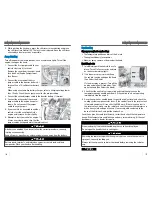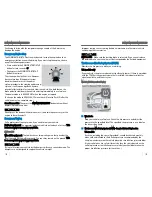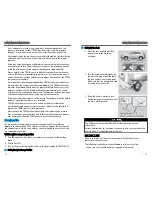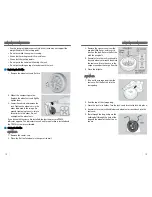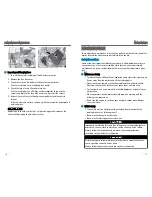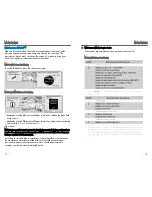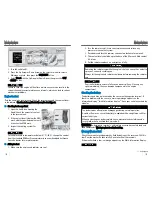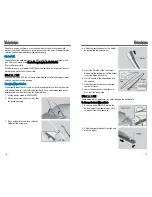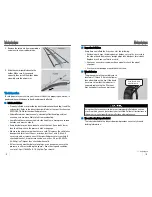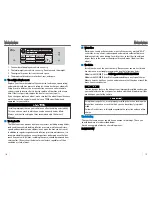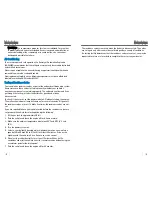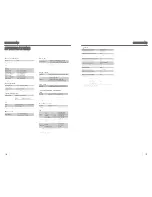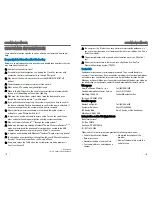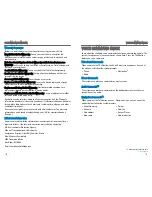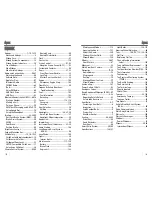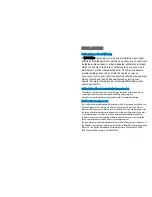
• P: tire type (passenger vehicle)
• 215: tire width in millimeters
• 55: aspect ratio (tire section height as a
percentage of its width)
• R: tire construction code (radial)
• 17: rim diameter in inches
• 94: load index (code indicating maximum
load tire can carry)
• V: speed symbol (code indicating
maximum speed rating)
n
Tire Identification Number (TIN)
The tire identification number (TIN) is a
group of numbers and letters that look
like the following example. The TIN is
located on the sidewall of the tire.
n
Glossary of Tire Terminology
Cold Tire Pressure – The tire air pressure when the vehicle has been parked
for at least three hours or driven less than 1 mile (1.6 km).
Load Rating – The maximum load that a tire is rated to carry for a given
inflation pressure.
Maximum Inflation Pressure – The maximum tire air pressure that the tire
can hold.
Maximum Load Rating – The load rating for a tire at the maximum
permissible inflation pressure for that tire.
Recommended Inflation Pressure – The cold tire inflation pressure
recommended by the manufacturer.
Treadwear Indicators (TWI) – The projections within the principal grooves
designed to give a visual indication of the degrees of wear of the tread.
DOT Tire Quality Grading
The tires on your vehicle meet all U.S. Federal Safety Requirements. All tires are
also graded for treadwear, traction, and temperature performance according to
Department of Transportation (DOT) standards. These gradings are explained
below.
Example
Tire Size
Maximum
Tire
Identification
Number (TIN)
Tire Load
Maximum
Tire Pressure
Tire Size
MAINTENANCE
132 |
n
Uniform Tire Quality Grading
Quality grades can be found where applicable on the tire sidewall between
tread shoulder and maximum section width.
For example:
Treadwear 200
Traction AA
Temperature A
All passenger car tires must conform to Federal Safety Requirements in
addition to these grades.
n
Treadwear
The treadwear grade is a comparative rating based on the wear rate of the
tire when tested under controlled conditions on a specified government test
course. For example, a tire graded 150 would wear one and one-half (1 1/2)
times as well on the government course as a tire graded 100. The relative
performance of tires depends upon the actual conditions of their use,
however, and may depart significantly from the norm due to variations in
driving habits, service practices, and differences in road characteristics
and climate.
n
Traction
The traction grades, from highest to lowest, are AA, A, B, and C. Those
grades represent the tire’s ability to stop on wet pavement as measured
under controlled conditions on specified government test surfaces of
asphalt and concrete. A tire marked C may have poor traction performance.
WARNING: The traction grade assigned to this tire is based on straight-
ahead braking traction tests, and does not include acceleration, cornering,
hydroplaning, or peak traction characteristics.
n
Temperature
The temperature grades are A (the highest), B, and C, representing the tire’s
resistance to the generation of heat and its ability to dissipate heat when
tested under controlled conditions on a specified indoor laboratory test
wheel. Sustained high temperature can cause the material of the tire to
degenerate and reduce tire life, and excessive temperature can lead to
sudden tire failure. The grade C corresponds to a level of performance
which all passenger car tire must meet under the Federal Motor Vehicle
Safety Standard No. 109. Grades B and A represent higher levels of
performance on the laboratory test wheel than the minimum required by
law.
MAINTENANCE
| 133

